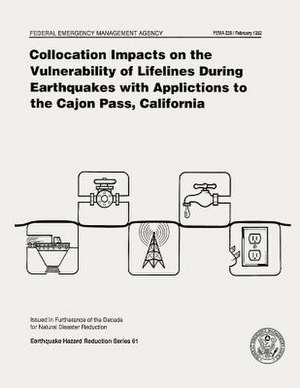Collocation Impacts on the Vulnerability of Lifelines During Earthquakes with Applications to the Cajon Pass, California (Fema 226)
Autor Federal Emergency Management Agencyen Limba Engleză Paperback
Preț: 143.16 lei
Nou
Puncte Express: 215
Preț estimativ în valută:
27.39€ • 28.66$ • 22.76£
27.39€ • 28.66$ • 22.76£
Carte disponibilă
Livrare economică 12-26 martie
Preluare comenzi: 021 569.72.76
Specificații
ISBN-13: 9781482788471
ISBN-10: 1482788470
Pagini: 114
Dimensiuni: 216 x 279 x 6 mm
Greutate: 0.28 kg
Editura: CREATESPACE
ISBN-10: 1482788470
Pagini: 114
Dimensiuni: 216 x 279 x 6 mm
Greutate: 0.28 kg
Editura: CREATESPACE
